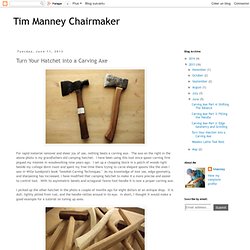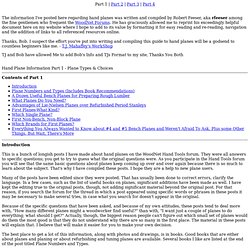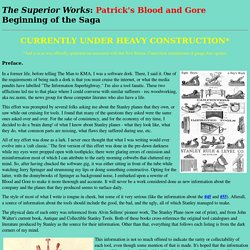

Turn Your Hatchet into a Carving Axe. For rapid material removal and sheer joy of use, nothing beats a carving axe.

The axe on the right in the above photo is my grandfathers old camping hatchet. I have been using this tool since spoon carving first piqued my interest in woodworking nine years ago. I set up a chopping block in a patch of woods right beside my college dorm room and spent my free time there trying to carve elegant spoons like the ones I saw in Wille Sundqvist's book "Swedish Carving Techniques. " As my knowledge of tool use, edge geometry, and sharpening has increased, I have modified that camping hatchet to make it a more precise and easier to control tool.
With its asymmetric bevels and octagonal fawns foot handle it is now a proper carving axe. I picked up the other hatchet in the photo a couple of months ago for eight dollars at an antique shop. When carving a handle, I like to start with a piece of green hickory, a froe, and a club. With the piece split down to size, I move to the shaving horse. Restoring wooden and metal planes - Restoring vintage and antique woodworking tools - wkFineTools.com. Restoring a Stanley No 7 Jointer Plane.
Every time I see an article in a woodworking magazine about restoring an old plane, it's usually a Stanley No 4 smooth plane.

While a smooth plane is probably one of the most important planes to own, it certainly shouldn't be the only plane you have in your arsenal of tools. A jointer plane is extremely handy for jointing the edges of boards straight as well as leveling the tops of wide panels flat. In fact I probably use my jointer just as much as I use a smoother. So I decided to write a blog and show how easy it is to refurbish an old jointer and put it back to use. The first thing I do when cleaning a plane is take it completely apart. Next you need to get yourself a product called Evap-O-Rust. Once the parts have soaked overnight, take them out and wash them under the tap to remove any residue from the part. Now that the plane is clean, you'll need to make it work. Next and most importantly, you need to sharpen the blade. Now it's time to see the results of your work. Shop Made Tools. Hand Plane Information. Part 1 | Part 2 | Part 3 | Part 4 The information I've posted here regarding hand planes was written and compiled by Robert Feeser, aka rfeeser among the fine gentlemen who frequent the WoodNet Forums.

He has graciously allowed me to reprint his exceedingly helpful document here on my website where I hope to add to its value by formatting it for easy reading and re-reading, navigation and the addition of links to all referenced resources online. Thanks, Bob. I suspect the effort you've put into writing and compiling this guide to hand planes will be a godsend to countless beginners like me. - T.J. Mahaffey's WorkShop TJ and Bob have allowed Me to add Bob's Info and TJs Format to my site, Thanks You Both Hand Plane Information Part 1 - Plane Types & Choices Contents of Part 1 Introduction This is a bunch of longish posts I have made about hand planes on the WoodNet Hand Tools forum.
Many of the posts have been edited since they were posted. The Superior Works - Patrick's Blood & Gore: Preface. Preface.

In a former life, before telling The Man to KMA, I was a software dork. There, I said it. One of the requirements of being such a dork is that you must cruise the internet, or what the media pundits have labelled "The Information Superhighway. " I'm also a tool fanatic. These two afflictions led me to that place where I could converse with similar sufferers - rec.woodworking, aka rec.norm, the news group for those computer literates who also have a life. This effort was prompted by several folks asking me about the Stanley planes that they own, or saw while out cruising for tools.
All of my effort was done as a lark. The style of most of what I write is tongue in cheek, but some of it very serious (like the information about the #45 and #55). The physical data of each entry was referenced from Alvin Sellens' pioneer work, The Stanley Plane (now out of print), and from John Walter's current book, Antique and Collectible Stanley Tools. Repairs and Condition Categories.
Toolmaking Art.